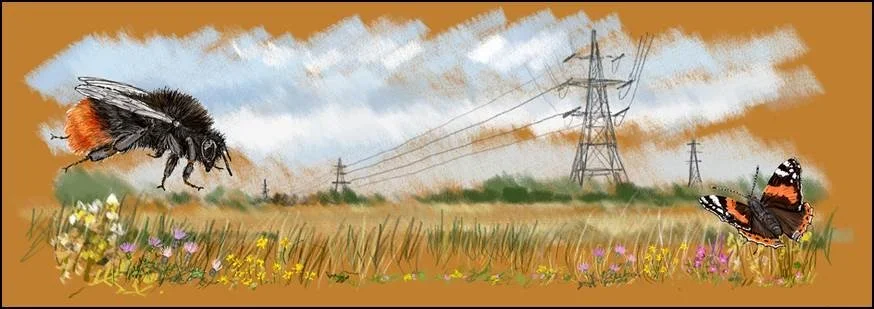The control of water on the Levels relies on a complex drainage system that extends for over 1500km, parts of which are around 2000 years old.
Rainfall and run-off from the surrounding upland areas creates a naturally wet landscape. To make it habitable for people and livestock, an interconnected system of open ditches has been developed to take water off the land and out to sea.
The first drainage ditches were created almost 2000 years ago by the Romans, who recognized the importance of the Levels for grazing cattle and horses. Percoed Reen on the Wentlooge Levels may be Roman in origin.
The drainage system was further developed and extended by the monks of Goldcliff Priory and Tintern Abbey in the Middle Ages. Much of the present-day landscape of the Levels, especially around Nash, Goldcliff and Porton, was created by their efforts. The Monksditch, which runs north to south through Whitson, dates from this period. It is raised above the level of the surrounding land and carries water from an upland stream across the Levels and out into the estuary via Goldcliff Pill.
Medieval ditches tend to wander across the landscape, possibly following the route of natural streams and tidal creeks, which the monks adapted for drainage. This created a pattern of small irregularly shaped fields in what is called an ‘unplanned’ landscape. Post medieval reens tend to be straight and are part of a ‘planned’ landscape – large areas of land that were reclaimed and drained at the same time.
Draining the Levels
Grips in fields near Redwick (Living Levels)
Rainwater is removed from fields along a network of shallow surface ditches called grips. Water then flows into field ditches and out into larger channels called reens. These in turn flow into main reens, which take the water down to the sea wall and out into the estuary through tidal gates called gouts. At low tide, freshwater flows out through the gout, via a flap. As the tide comes in, the sea water pushes against the flap and closes it.
Almost the entire drainage system is powered by gravity alone, although some pumps were used to drain the lowest lying areas of back-fen, at Green Moor and Caldicot Moor.
Peterstone Gout (tidal gate) (Leighton Baker)
Modern stank (C Harris)
Water levels are controlled by a series of weirs along the reens, called stanks. These allow water levels to be lowered in the wet winter months and raised in the summer, creating the lush Levels’ grasslands.
The Levels’ drainage system creates a fantastic habitat for wildlife, from dragonflies, kingfishers, water voles and otters, to the world’s smallest flowering plant, Wolffia arrhiza.
The drainage network is classified as a SSSI (Site of Special Scientific Interest)












![Wesleyan Methodist chapel Castleton (Penny Gregson)[2].jpg](https://images.squarespace-cdn.com/content/v1/5a1d5fb38a02c70db7c34f81/fe4960cd-db68-469d-8411-f5e21327e383/Wesleyan+Methodist+chapel+Castleton+%28Penny+Gregson%29%5B2%5D.jpg)